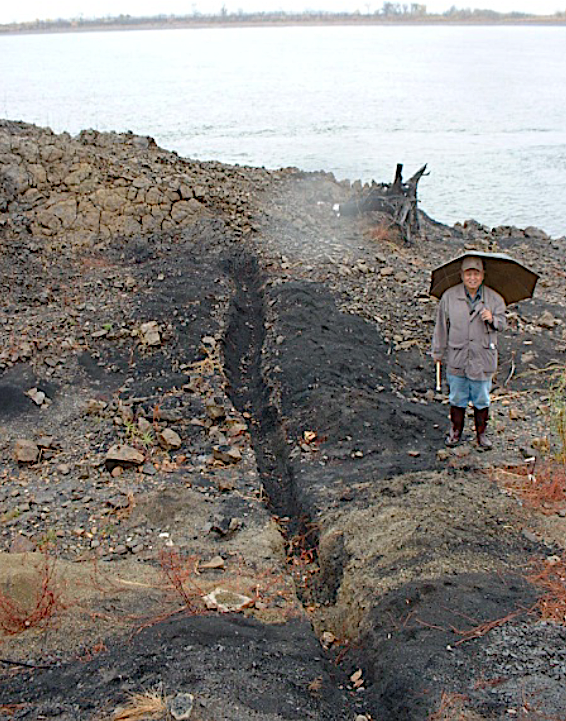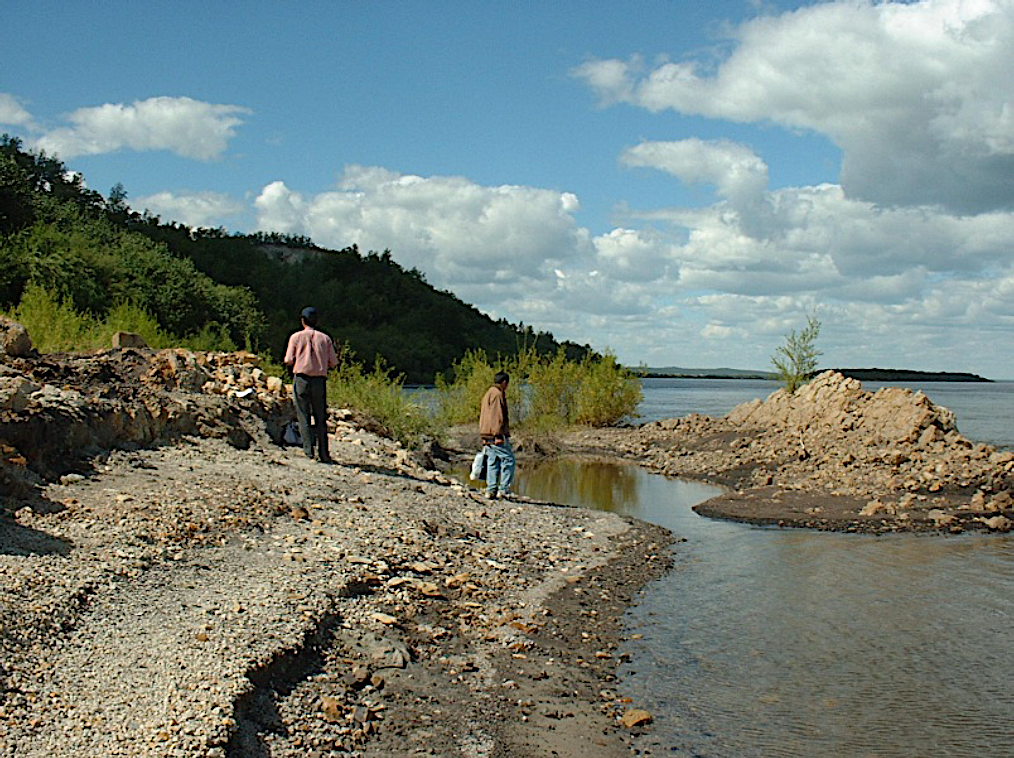Furao Fm
Type Locality and Naming
Jiayin Basin. The Furao Formation was designated by the Heilongjiang First Regional Geological Survey Team in 1981. The section for the designation is at Nanshan of Xiaoheyan of the Furao township, Jiayin County, Heilongjiang (129°38′18″E; 49°16′56″N). The reference section is down the borehole No.59-1 of the Wuyun Coal Mine of the Jiayin County. In 1958 the Xiao Hingganling Geological Team named the sandy mudstone and carbonaceous shale with coal beds the Wuyun Fm, and assigned it to Paleocene-Eocene. In 1981 the Heilongjiang First Regional Geological Survey Team named the lower part of the Wuyun Fm as the Furao Formation. In 1983 the Furao Formation was used publically by Luo Yuxing, Zhang Zhicheng and Li Weirong.
Sun et al. (2011) changed the definition of the former "Furao Formation" and divided it into two parts: the upper part named as the Baishantou Member belonging to the above Wuyun Fm with an age of Danian, while the lower part assigned to the newly Furao Formation assigned to Maastrichtian in age. [This is the upper formation of Jiayin Gr .]
Lithology and Thickness
The Furao Formation is dominated by gray black brown carbonaceous mudstone, silty mudstone and siltstone, intercalated with fine sandstone, tuffite and thin coal seams, locally with gravel-bearing sandstone and thin-bedded conglomerate. The Furao Formation is 299.2 m thick.
As the definition of Sun et al. (2011), the formation is composed of grey and greenish grey sandstone, siltstone and mudstone, intercalated with some thin tuff or tuffaceous beds, more than 110 m in thickness.
[Figures: Type section of Furao Formation in Xiaoheyan of Furao, Jiayin of Heilongjiang] |
Relationships and Distribution
Lower contact
The lower limit is not clear and the upper limit consisting of yellow gray siltstone is distinguished from gray conglomerate at the base of the Wuyun Fm, and there is a disconformity between the two.
Upper contact
The Furao Formation of late Maastrichtian is conformably overlain by the early Danian Baishantou Member of Wuyun Fm
Regional extent
The present formation occurs in the Xiaoheyan area of Wuyun town of Furao and extends in NW direction along the bank of the Heilongjiang River. In Beishan of Xiaoheyan, the upper part of the Furao Formation is exposed, dominated by mudstone and siltstone with carbonaceous mudstone and thin-bedded lignite, with medium-grained sandstone in the upper part and tuff breccia in the lower part. Near Baishantou west of the Wuyun Town there crop out gravel-bearing sandstone and sandstone with coal beds, which are equivalent to the middle and lower bed of the formation..
GeoJSON
Fossils
The formation yields floras Sequoia sp., Metasequota distincta, Taxodium sp., Trachodendroides arctica, Ceroiphyllum sp., Aralia sp., Plantanus raynoidsii sp., Tiliaephyllum sp., Populus sp. near Baitoushan of northwest Furao, and abundant sporopollen grains down the borehole of Furao town. Among the sporopollen grains the Angiosperms occupies 17.5-86.9%; Aquilapollenites assemblage 10-30% such as Aquilapollenites spinulosus, A. quadrilobus, A. atelckii, A. insignis, Mancicorpus mingshuinensis, Orbicula pollis sp., Integricorpus sp., Wodehousea sp.
Sun et al. (2011) proposed more abundant fossils from the Furao Formation. They are Maastrichtian pollen and spores Aquilapollenites funkhouseri, A. reductus, Pseudoaquilapollenites striatus, Pseudointegricorpus clariretuculatus, Marsypiletes cretacea, Zlivisporites novomexicanus, Rugulatisporites quintus, Wodehoseia Stanley, etc. and rich fossil plants.
Age
Depositional setting
It is of shallow lake-swamp facies.
Additional Information

